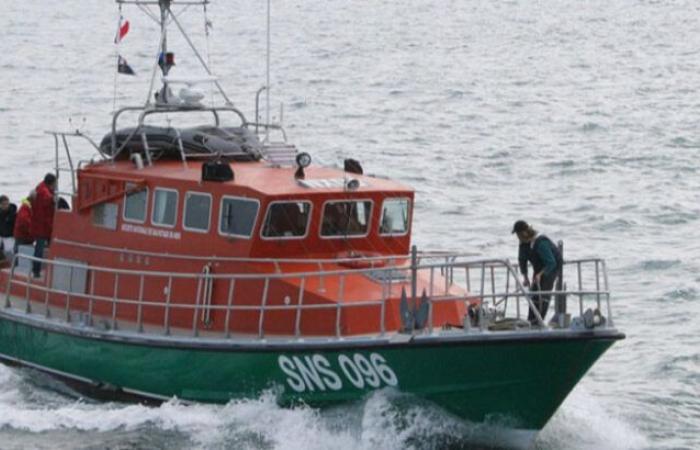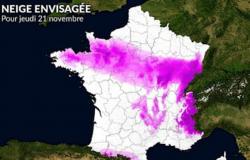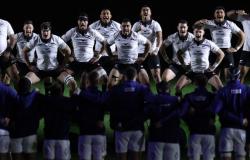
In France: the SNSM, heir to a tradition of solidarity
The SNSM was founded in 1967, resulting from the merger of two historic rescue societies, the Société Centrale de Sauvetage des Naufragés (SCSN), created in 1865, and the Société des Hospitaliers Sauveteurs Bretons (SHSB), founded in 1873. Since Therefore, the SNSM established itself as the central player in sea rescue on French territory. Spread across 206 stations, 230 first aid stations and 32 training centers, the SNSM's 11,000 volunteers carry out missions ranging from rescue at sea to prevention for coastal users. Anchored in a long tradition of maritime mutual aid, the SNSM embodies the spirit of solidarity and courage necessary to face marine dangers, around three main missions: saving, preventing, training.
In the United Kingdom: the RNLI, an institution dating back almost two centuries
Founded well before the SNSM, in 1824, the RNLI celebrated its bicentenary this year. Its origins date back to a time when frequent shipwrecks threatened seafarers and coastal communities sought support for survival at sea. From its beginnings, the RNLI laid the foundations of a rigorous and independent organization, which quickly became one of the most respected rescue institutions in the world. Today, it operates 238 stations, covering the coasts of the United Kingdom, Ireland and the Channel Islands, and has already saved more than 140,000 lives in almost two centuries. The organization highlights values such as courage, altruism, and reliability, with the aim of reducing drownings by 50% by 2024, an ambitious objective which demonstrates its driving role in maritime prevention.
Organizations based on volunteers and donations
The SNSM and the RNLI are both based on an intensive volunteer model, but with structures adapted to the specificities of each territory. In France, the SNSM relies on a dense network of stations and first aid posts which cover the metropolitan and overseas coasts, allowing optimal responsiveness. Its volunteers, the vast majority from local communities, respond effectively to emergencies. In the United Kingdom, the RNLI deploys a similar network but with a larger volunteer workforce: 4,500 active volunteers intervene at sea, supported by some 20,000 other volunteers in varied roles, thus helping to strengthen the scale of the missions.
In terms of funding, the two associations depend largely on private donations, but differ in their use of public subsidies. The SNSM receives approximately 27% of its funds from the State, crucial aid but insufficient in the face of growing needs, requiring permanent collection campaigns from the public and businesses. The RNLI, for its part, operates almost without public funding, relying on private donations, an independence which guarantees valuable financial stability and strong autonomy, even if, like any association, it remains dependent on donations for its operation.
From rescue missions to user trainingThe SNSM and the RNLI share the same mission of rescuing people in danger, but the RNLI also covers the UK's inland waterways, widening its scope of intervention. This leads it to adapt its rescue techniques to the particularities of river environments and to diversify its operations. In France, the SNSM focuses on the metropolitan and overseas coastline, where it carries out up to 12,000 interventions annually, a significant number which makes it a key player in coastal rescue. At the same time, the two organizations are investing in prevention programs to raise users' awareness of marine dangers. The SNSM organizes awareness campaigns on coastal and navigation risks, while the RNLI, with its drowning prevention initiatives, exports its expertise beyond British borders. This summer, the SNSM carried out 2,260 interventions at sea, covering a wide range of missions: rescue operations, assistance, and medical transports between the islands and the continent. In total, nearly 7,000 people were rescued offshore, a figure demonstrating the intense commitment of SNSM volunteers during the summer season. At the same time, 18,000 prevention actions were carried out, including care for more than 12,000 people and direct assistance for nearly 3,000 others. Volunteers also searched for and found nearly 600 lost children during more than 2,500 interventions on the beaches and in the 300-meter coastal strip. In terms of training, the two organizations train not only their rescuers but also users for make them more autonomous in the face of maritime risks. In France, the SNSM provides this training in its 32 centers and strives to develop the skills of its volunteers in the areas of navigation, sea rescue and first aid. For its part, the RNLI, with modern facilities such as the RNLI College, offers training including realistic simulations to prepare rescuers for the most extreme situations. This training center is also internationally renowned and welcomes foreign professionals to share best practices in maritime security.
© sous licence cc Steve Knight
Means and equipment: distinct capabilities, common prioritiesTo accomplish their missions, the SNSM and the RNLI have developed fleets adapted to their environments. The SNSM has around 781 boats (speedboats, semi-rigid, and jet-skis), modern equipment but whose renewal is slowed down by budgetary constraints. The RNLI, better financially endowed, maintains a fleet of 450 canoes, including 130 “all-weather” designed to withstand the most severe conditions. This regular renewal capacity allows the RNLI to ensure increased efficiency and safety, even in extreme environments. Both the SNSM and the RNLI embody dedication to safety at sea, but with distinct approaches and resources. The RNLI, with its financial autonomy and technical resources, benefits from greater stability and capacity for innovation, while the SNSM, although efficient and respected, must contend with limited resources and essential public support . Each of these institutions continues to embody the spirit of solidarity and courage necessary to save lives at sea. In their respective countries, they represent much more than a simple organization: they are the symbol of a maritime tradition and of 'a deep humanitarian commitment. Figaro Nautisme, through its reference work Bloc Marine, has always supported the SNSM. You will find more information on the association in each annual edition of Bloc Marine. And before going to sea, take the right steps by checking the weather on METEO CONSULT Marine and downloading the free Bloc Marine mobile application.





